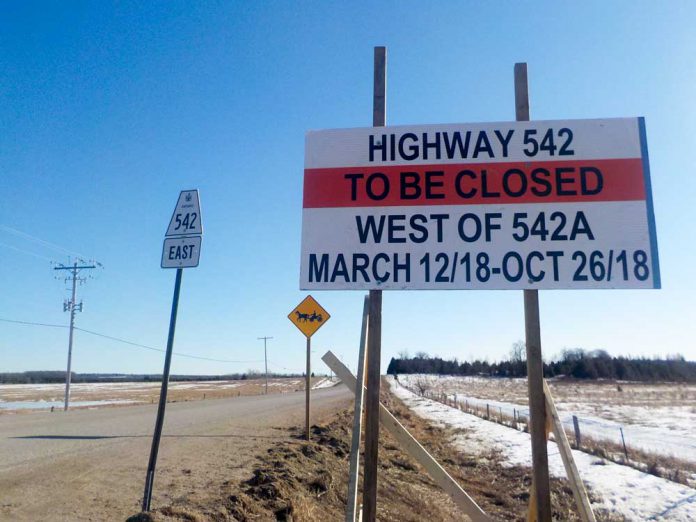‘Line 5’ rupture would cause worst-ever environmental disaster
MICHIGAN—The Enbridge Line 5 pipeline beneath the Straits of Mackinac has been cited by environmentalists as holding the potential for the worst environmental catastrophe in North American history—and the data backs them up. Yet the governor of the State of Michigan has just signed off on concerns about the line during a closed door meeting with the company, a meeting that took place on the very cusp of the start of a series of public commentary meetings.
Built in 1953 during the Eisenhower administration, the two 20-inch-in-diameter conduits that make up the dual Line 5 pipeline travel nearly 2,000 miles from the oilfields of western Canada to the Ontario refineries located in Sarnia, with roughly four of those miles running beneath the waves of the Straits of Mackinac. The pipeline carries roughly 23 million gallons of heavy tar sands crude (thinned with benzene) through what has been described as one of the most environmentally sensitive areas in the world.
Sections of Line 5 are cracked and dented, with recent reports noting new dents that came apparently from anchor strikes. Some segments of the line have lost over a quarter of their original wall thickness to corrosion and, despite admonitions against unsupported sections of the submarine pipeline longer than 250-feet contained in the easements from the State of Michigan, there are apparently several unsupported sections far in excess of that limit currently along the pipeline’s length. The pipeline lies in waters ranging from 50 to 250 feet below the surface, running along the lakebed. These sections are flexing continuously in the strong currents to be found in the Straits of Mackinac.
A water current simulation study by the University of Michigan shows the distribution of oil from a rupture in the Line 5 pipeline in the straits could potentially impact as much as 740 miles of shoreline in Lake Superior and Lake Huron, including the entire northern shore of Manitoulin Island. It should be noted that Enbridge, a massive Canadian company disputes the simulation results.
A PBS special documentary ‘Beneath the Surface: The Line 5 Pipeline in the Great Lakes’ produced by Great Lakes Now, follows the story of the pipeline since its first conception to the current concerns being voiced by those living and working in the waters that could be impacted by a spill from the Line 5 pipeline.
“If you were to pick the worst possible place for an oil spill in the Great Lakes, this would be it,” said David Schwab, Ph.D., research scientist at the University of Michigan Water Center, one of the foremost experts on Great Lakes water currents and the creator of the animation that models how a spill from the pipeline would impact the lakes. “The currents are powerful and change directions frequently. In the event of an oil spill, these factors would lead to a big mess that would be very difficult to contain.”
The waters of the strait can be very rambunctious throughout the year, but should a spill occur during the dead of winter, remediation and containment efforts would be hampered exponentially.
“We do some pretty stupid things, but that takes first prize,” said Mike Wilton of Algonquin Eco-Watch. “Especially when you consider that there are other options available.”
Mr. Wilton points out that if the line were to be extended overland to Duluth, Minnesota, it could traverse nearly its entire length over a more accessible land route.
“All of Manitoulin should be concerned about this,” pointed out Mr. Wilton. “This will effect us directly. With the prevailing southwest winds the Island is directly in the path of any spill.”
But aside from the direct impact that a Line 5 would have on Manitoulin Island, Mr. Wilton notes that the environmental impact would be disastrous for literally millions of people. With more than 40 million people dependant on the Great Lakes for drinking water and for commercial activity, including tourism and the fisheries, a spill would be the largest single environmental disaster in human history.
Chief among the concerns about the Line 5 pipeline is the track record of the company when it comes to transparency and safety. The aforementioned recently released PBS documentary (available online on YouTube) noted that when private citizens attempted to save oil-soaked wildlife from a previous massive oilspill on the Kalamazoo River, the company threatened those volunteers with lawsuits.
When it comes to cracks in the pipeline, Enbridge had been aware of the issue for five years and when a spill did eventually occur, it took the company 17 hours to shut the pipeline down.
Enbridge spokesperson Roger Duffy, a former journalist who in fact covered the earlier Kalamazoo River spill has since gone to work for the company. He said that during his investigative reporting he discovered that Enbridge was a “good company” that has learned from its mistakes and seeks to do the right thing and “changed the way we do things” in response to the disaster. He maintained that the company shares the environmentalist concerns and that the pipeline through the Straits of Mackinac is “the best way to protect the Great Lakes.”
That argument lies at the heart of the creation of the Line 5 pipeline. It was built during the aftermath of one of the worst disasters of the 1950s, when a tanker (the previous preferred method of shipping fossil fuels) exploded shortly after entering the harbour at Sarnia. One person was killed and others wounded in that incident.
The design of the pipeline, with its attendant two pipes, was designed to reduce corrosion. The pipelines are coated with seven layers to shield the metal from corrosion, but inspections have indicated that those seven layers “have been reduced from one to zero” according to the documentary.
Spokespersons for the US Coast Guard, those who would be tasked with dealing with a spill in the Straits of Mackinac, suggest that “it isn’t as big a concern as people think.”
The propane industry is one of the key supporters of the Line 5 project, with industry spokesmen citing that it would require 10,000 rail cars loads a year to replace the capacity of the line. With visions of Lac Magentic not yet faded from the public consciousness, that prediction may make the cure worse than the disease in some minds.
But the Pipeline Safety Alternatives Board formed by the Michigan state government and tasked with creating a report on the pipeline, a report released in October 2017, seemed to place the future of the pipeline in question and the board had scheduled public meetings seeking public comment on its report.
In November, the governor of Michigan and Enbridge signed an agreement that included seven new safety requirements (of the company that allegedly ignored previous safety commitments), including the concept of creating a new pipeline into a tunnel under the lakebed.
In the meantime, according to environmental groups monitoring the issue (including retired former company scientists), Line 5 continues to be a major concern and potential threat to the way of life of practically everyone who lives and works along the shores of the Great Lakes.





